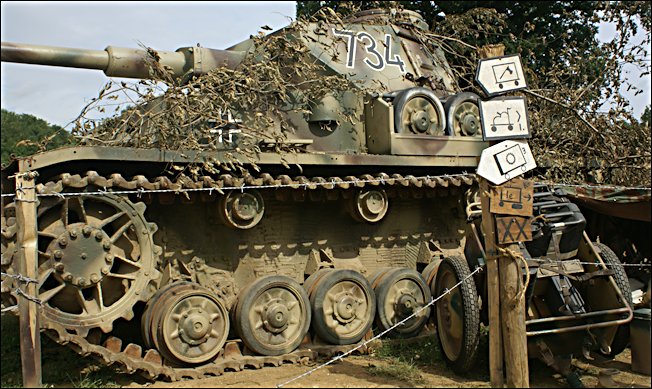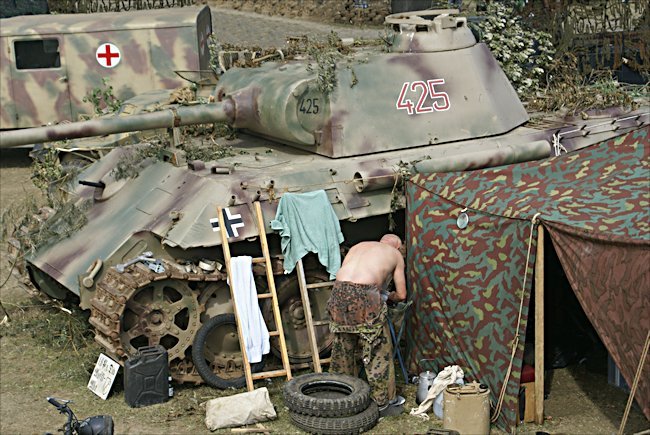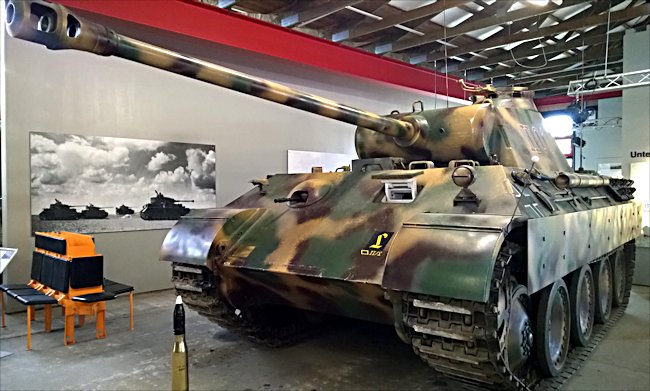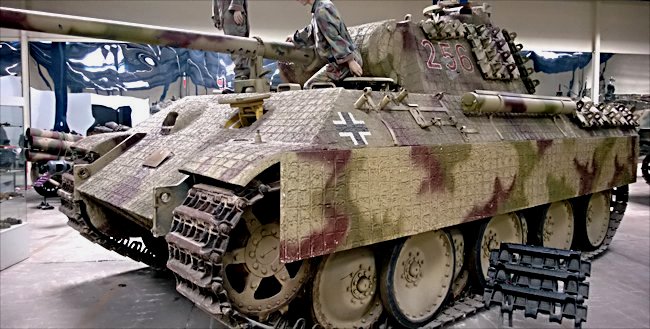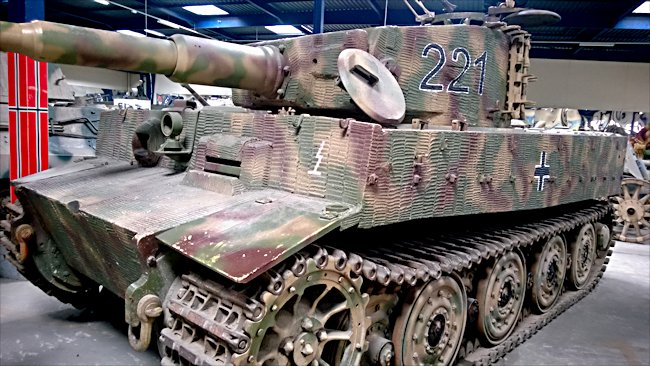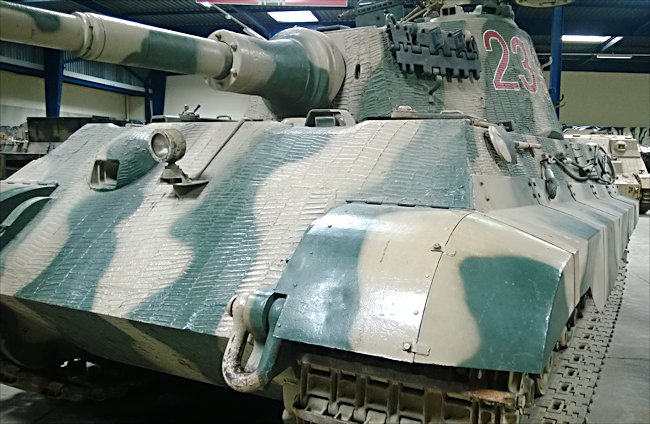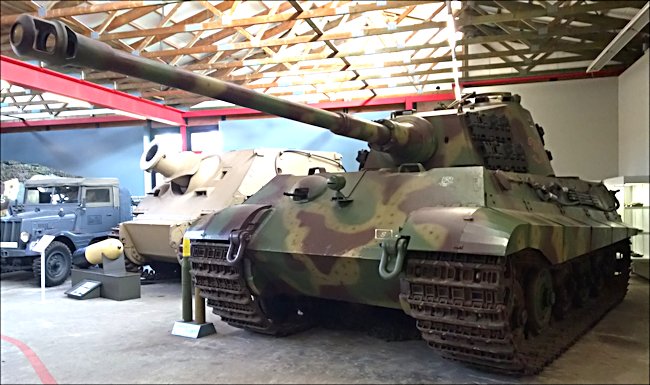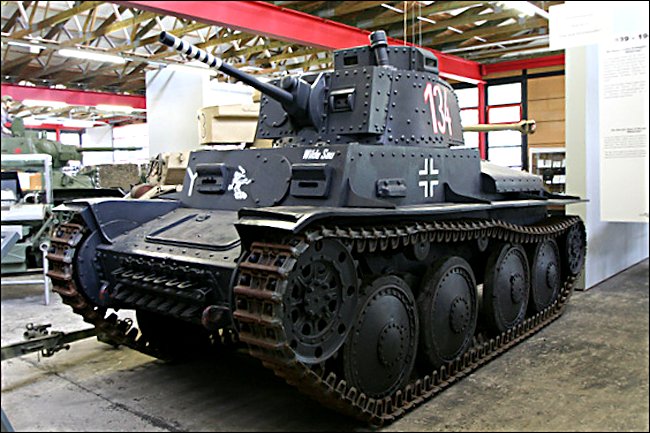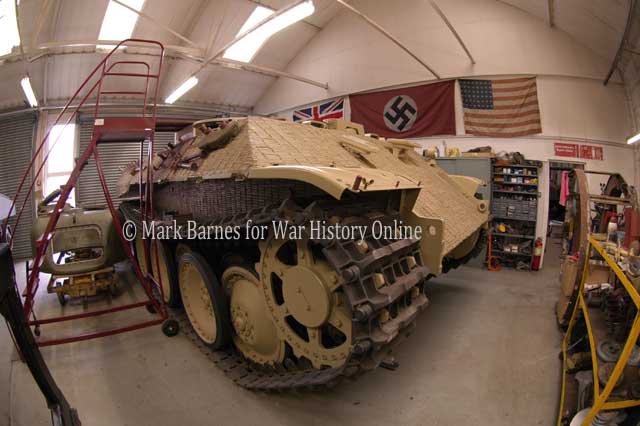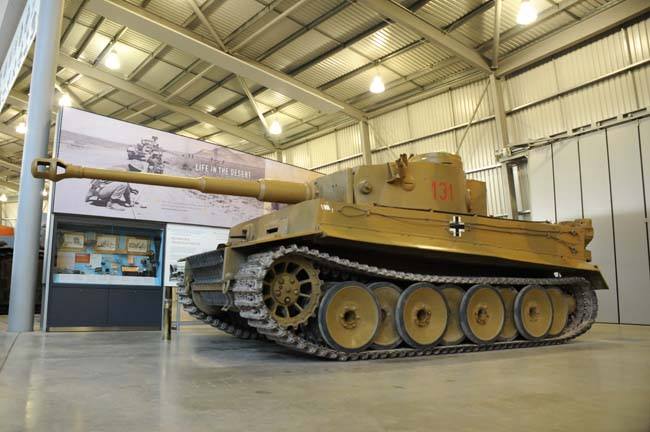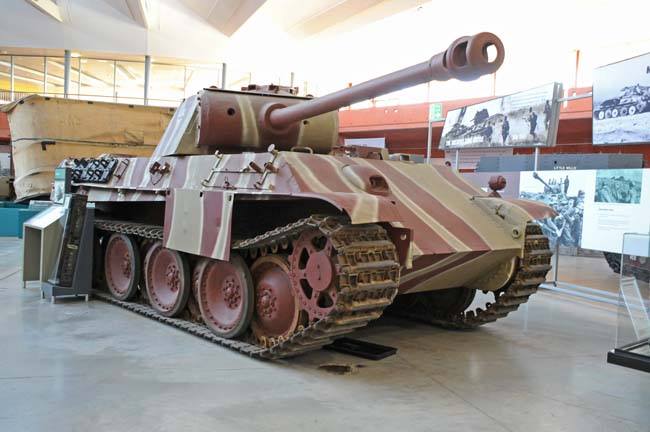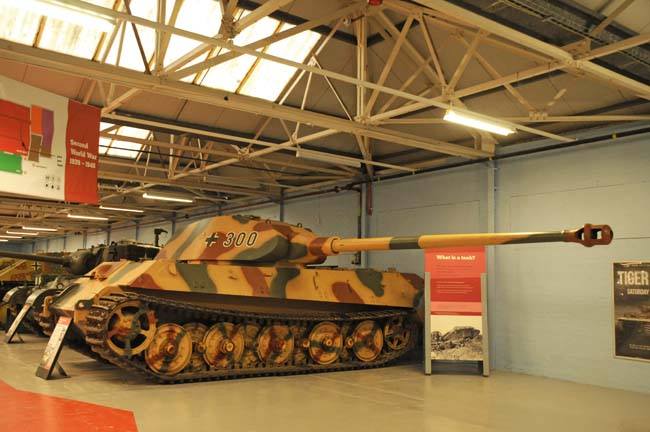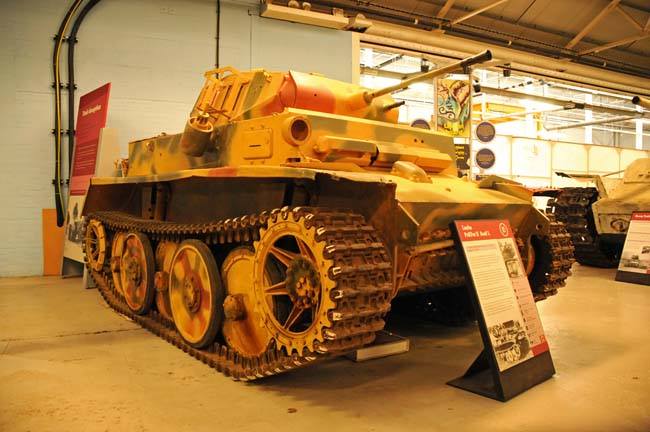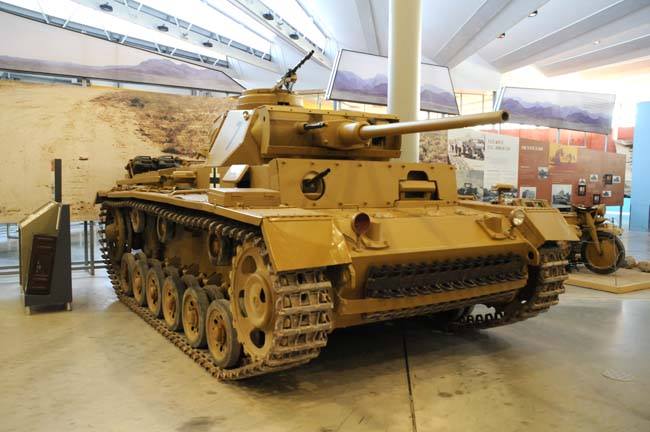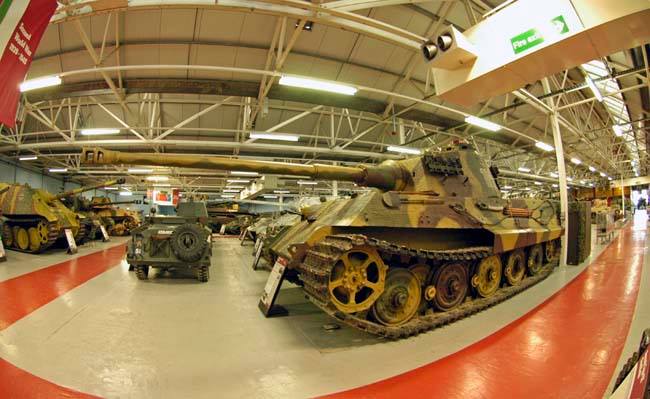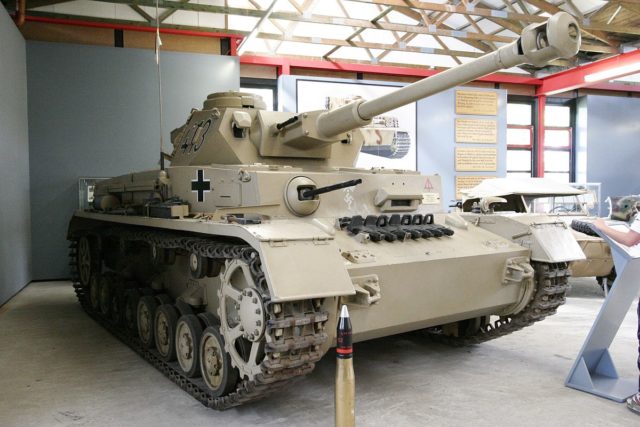
This German Panzerkampfwagen IV tank Ausführung G can be found at the Deutsches Panzermuseum in the small military town of Munster, Germany.
In 1940 the best and most heavily armoured tank of the German army, the Panzer IV tank, only accounted for 10% of the tanks available to the commanders of the Panzer Divisions during the battle of France. It was an oversight, which could have potentially been disastrous.
Throughout its long career, the Panzer IV tank was to prove a remarkably versatile design. There are those historians that say, if the Germans had stuck with the Panzer IV tank and built large numbers of them, they would have done a lot better rather than messing around with the complicated and difficult to produce Tiger and Panther tanks.
The reason is that this tank was superb all-round design. It was in service when war broke out in 1939 and it was still an effective front line tank at the end of World War II.
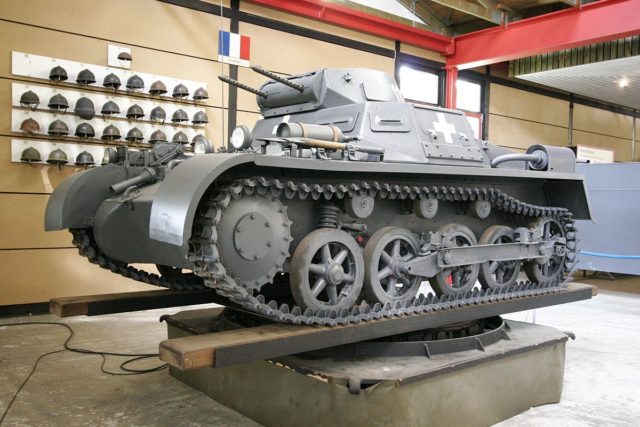
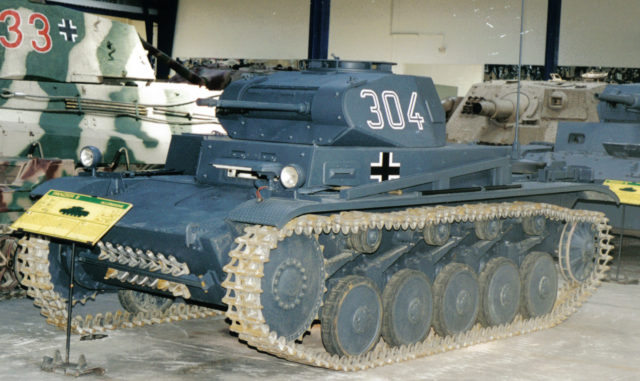
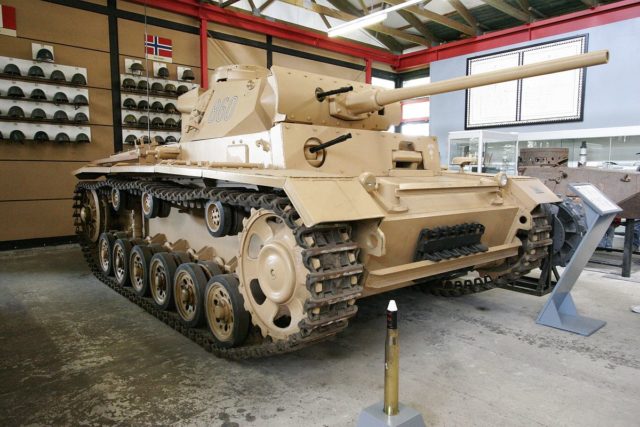
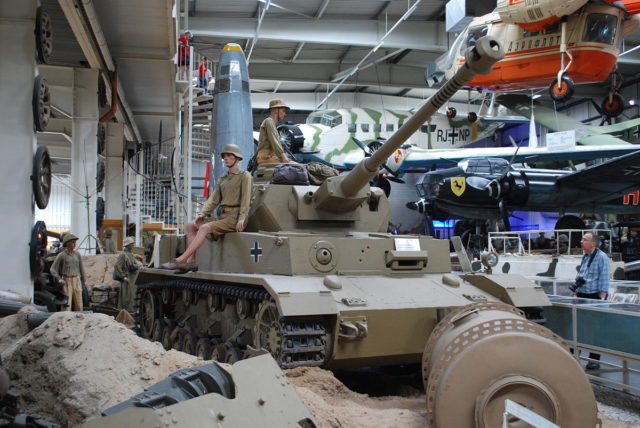
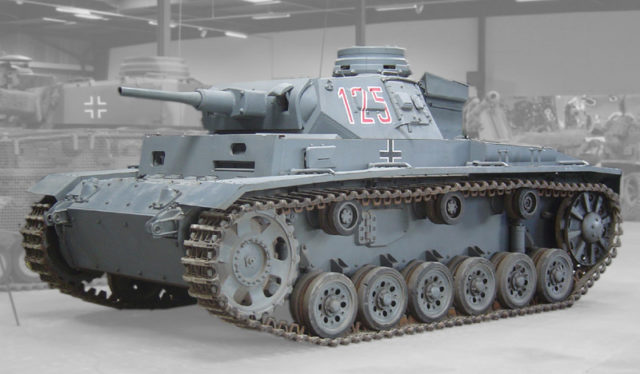
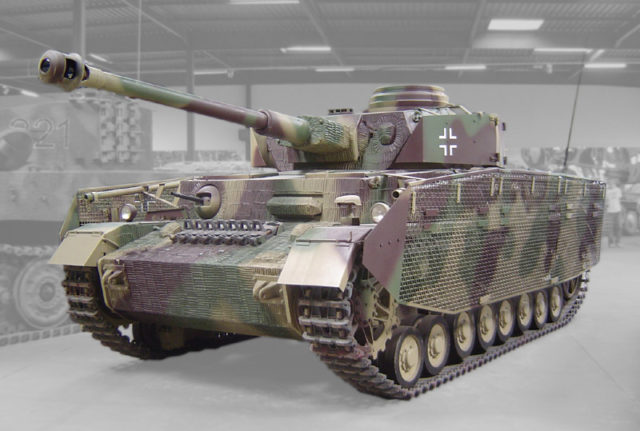
This German Panther Tank Number 425 is in private ownership and is often seen at military vehicle events in the summer in Britain like the annual “War and Peace” Show in Folkestone.
This German Panzer IV tank number 734 is in private ownership and is often seen at military vehicle events in the summer in Britain like the annual “War and Peace” Show in Folkstone.
This Panther Ausf A Medium Tank Sd.Kfz.171 can be found at the German Tank Museum – Deutsches Panzermuseum in Munster, Germany.
This Panzer V Panther Tank Ausf. A Medium Sd.Kfz.171 can be found at the French Tank Museum in Saumur in the Loire Valley.
T
This German Tiger I Ausf. E Heavy Tank panzerkampfwagen VI can be found at the French Tank Museum in Saumur in the Loire Valley.
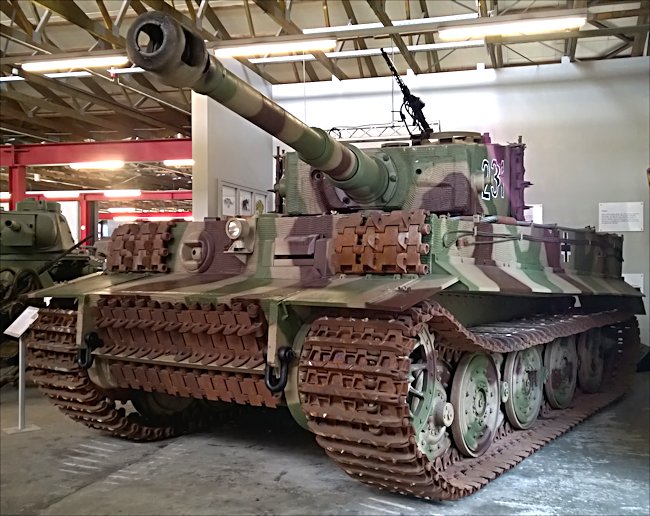
This German King Tiger II Ausf. B Heavy Tank can be found at the French Tank Museum in Saumur in the Loire Valley.
This German Königstiger Royaltiger tank, panzerkampfwagn VI Ausf. B Tiger II, can be found at the German Tank Museum in the military town of Munster, Germany.
The Panzer 38(t) light Tank saw operational service in Poland in 1939 and the battle of France in 1940. This German Panzer 38(t) Tank can be found at the Deutsches Panzermuseum in Munster, Germany.
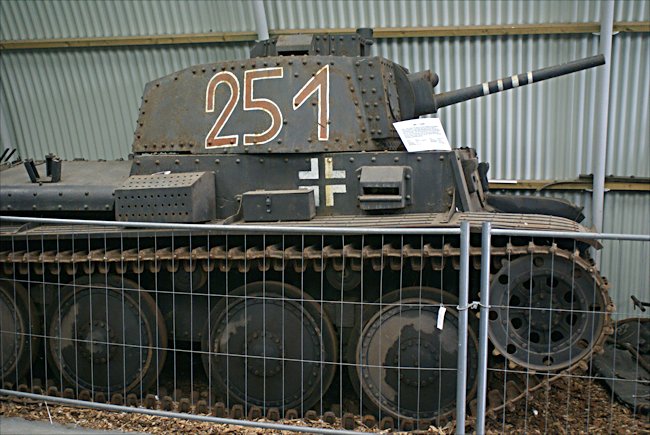
We were delighted to be invited by the Wheatcroft Collection to attend the Engine Start-Up day when the Maybach power unit to be fitted into the collection’s early A type Demag Panther was given a run for the benefit of a group of guests. On our way up to Leicestershire we stopped off at the English Civil War battlefield of Naseby where Oliver Cromwell’s cavalry brought about victory for Parliament in 1645. You could not get a greater contrast with the war machine we saw the next day.
We took the opportunity to have a close look at the progress of the restoration project and, as you can see from the images, things are progressing beautifully after many years of dedicated hard work by the restoration team. The Panther makes for a stunning sight, even from the within the confines of a workshop, and on completion it will truly be something to behold. The standard of the work lives up to all we have learned to appreciate from Kevin Wheatcroft and his team.
The tank’s empty engine bay serves to illustrate the difficulties the design presented for operation and maintenance. You really do wonder how they fitted all the essentials in. It was interesting to hear just how many of the components of the tank are unique to it and how the failure to achieve greater standardisation of elements of tank design had a serious impact on Nazi Germany’s production program. It seems simplistic, but the rivalries between designers, manufacturers and branches of the Nazi regime conspired to create a limited range of over-engineered Rolls-Royces rather than a solid fleet of Fords. The contrast with the Sherman and the T34, although often used, really comes into focus when you see a Panther in more detail. It is jaw dropping.
The restored turret is equally impressive and is progressing towards fruition. The interior looks beautiful and the net result should be exceptional once the hull and turret are married up at some point in the future.
The work that has gone into this project is immense. The attention to detail is exceptional; especially when you consider so much of it will be permanently hidden from view. This is the essence of the very best conservation work.
This tank was the first Tiger to be captured intact by British or U.S. forces when it was knocked out in the final month of the Tunisian campaign. It arrived in Tunisia some time between 22nd March and 16th April 1943 and was involved in an action with 48 RTR near Medjez-el-Bab on 21 April 1943. It knocked out two Churchills but a shot from another’s six pounder stuck the gun mantlet, and although unable to penetrate the tank’s thick armour, jammed the turret and wounded the commander. Damage is still visible on the mantlet, superstructure front plate and turret lifting boss. The crew abandoned the tank and it was recovered the next day and refurbished using parts from other vehicles. The Tiger was later displayed in Tunis and inspected there by King George VI and Winston Churchill. In October 1943 it was sent to the School of Tank Technology for evaluation and in November 1944 displayed on Horse Guards Parade.
The trend to design bigger and more powerful tanks is universal but the results are not always impressive. The requirement for a 45 ton tank was issued in May 1941 and taken up by Dr Porsche on one hand and by Henschel & Co. on the other. Trials of prototypes in 1942 reveald that the Henschel design was the more practical and production began in July 1942. By this time specifications had changed and the tank would weigh in the region of 57 tonnes, and mount an 88mm KwK 36 gun behind a maximum 110mm of armour on the turret front.
It was a formidable combination. The gun was very effective and extremely accurate while the armour was proof against most contemporary anti-tank guns at anything but the closest range. Yet it was not all progress. the Tiger was so wide it had to be narrowed down to travel by rail and in bad conditions the overlapping wheels trapped mud and ice sufficient to bring the big tank to a halt. The engine had a nasty habit of catching fire while the gearbox, if subjected to great stress, was liable to break down. If this happened the repair crew had to lift the turret off to get at it.
For all that the Tiger was regarded as formidable. It saw action in Russia, Tunisia, Sicily, Italy and north west Europe (although production was limited to just 1,354 tanks) and it was feared by all Allied tank crews, which gave the Panzer forces a considerable pyschological advantage. Even so it would probably be fair to say that more Tigers were lost through mechanical failure than combat action.
The Panther was not as thickly armoured, nor as heavily armed, as tanks such as the Tiger but was probably a much more balanced design. It was one of the fastest German tanks, highly manoeuvrable and equipped with an accurate gun. Its worst defect was a propensity to catch fire if the engine backfired.
The Model G was the last main production variant of Panther and our exhibit was one of a group built, under British control, at the end of the war. These were tested in Britain and Germany and may have contributed to the design of the British Centurion.
The camouflage scheme is similar to that used on Panthers leaving the factory in the last months of the war. A basic undercoat of red with other colours rapidly applied. It was seen on Panthers of 5th Battalion, 25th Panzer Grenadier Division on the Eastern Front in February 1945.
This example is at the Tank Museum Bovington.
The Luchs (or Lynx) was essentially a variant of the Panzer II although by the time it first appeared, in August 1942, the role of the light tank in German service had changed. Faced with the atrocious mud of the Russian front the Germans elected to use tracked, instead of wheeled reconnaissance vehicles and the Luchs was the main type. The odd thing, in some respects, was the idea of using overlapping roadwheels which, in muddy conditions could prove a severe handicap.
As things turned out, and despite the fact that only 100 were built, the Luchs served not only in Russia but in North West Europe as well. Our exhibit served with 1 Kompanie, Panzer Aufklarung Abteilung 9, 9th Panzer Division. 9 Panzer Division had 26 Luchs on 1st July 1944. They were used in Normandy for a short time but then withdrew to Aachen and the Ruhr. This Lynx was probably captured in Normandy or Falaise.
T
This example is at the Tank Museum Bovington.
By 1942 the Panzer III was regarded as being outclassed by more modern tanks and production gradually switched the self-propelled mounts such as the Sturmgeschutz, which used the same chassis. However in an effort to get more value out of turreted tanks still scvheduled for production it was agreed to fit the short-barrelled 75mm KwK L/24 gun in place of the long 50mm. Firing a shaped charge anti-tank round this could be a very effective weapon but its primary role was to support other tanks with high explosive. In particular they were issued, on a scale of ten per Battalion, to Tiger tank units for this purpose.
Our exhibit belonged to the same battalion as our Tiger I and was captured in 1943 in Tunisia. It was cut open for display while at the Royal Military College of Science.
The right had track was missing. The tank also shows signs of having been fitted with schurzen (side skirts). It did not have side-skirts at the time of capture.
The Tank Museum’s example of the Panzer IIIN was based on a chassis originally intended for an Ausf L. It was issued to the 501st Schwere (Heavy) Panzer Abteilung and shipped to Bizerta, Tunisia in January 1943. The 501st became the 3 Abteilung of Panzer Regiment 7, part of the 10th Panzer Division, on 26th February 1943 and the tank’s tactical number was changed to 832. The 10th Panzer Division took part in the advances towards Medenine on 6th March 1943 and continued to use small numbers of tanks until their surrender on 11th May 1943. This tank must have been captured at some time between 6th March and 11th May.
It was then shipped to the United Kingdom for evaluation and later sectionised.
This example is at the Tank Museum Bovington.
Captured by Sgt. Roberts, 23rd Hussars, in Normandy during 1944. Turret No. 104
1st SS Panzer Corps (2 crosskeys and leaves) badge originally on vehicle. See “Ruckmarsch! The German Retreat from Normandy Then and Now by Jean Paul Pallud (After the Battle 2006 isbn 1 870067 57 6). This gives the location of this tank’s demise as Magny-en-Vexin on 30 August 1944. It belonged to SS Panzer-Abteilung 101 and was commanded by SS-Oberscharfuhrer Sepp Franzl.
It suffered transmission failure and was abandoned by its crew. Sergeant Roberts, 23rd Hussars, put two rounds into the right side of the tank, just above the top run of the tracks but it was already immobilised by then. It is said that the tank was recovered by the Royal Engineers in January 1945 and shipped back to Britain.
Do visit the Tank Museum, Bovington and there are many ways you can support them see here for more details www.TankMuseum.org
